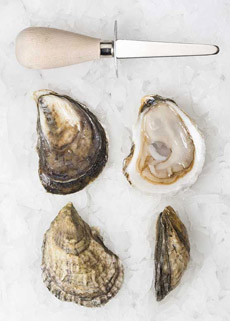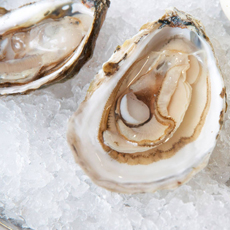TIP OF THE DAY: How To Taste Oysters
|
There are numerous flavor wheels (also called aroma wheels and tasting wheels) created by the specialty foods industry. Industry professionals use them to understand the different flavors of the products they represent.
The charts show the flavor spectrum in the particular category, mapping nuances of flavors and aromas. They’re a great way to learn how to taste. We’ve spent many enjoyable sessions, sitting down with the food and the wheel. THE NIBBLE has presented a: Today, we present an Oyster Flavor Wheel (below) created by Pangea Shellfish. The flavors of agricultural products like cacao beans, olives and wine grapes are greatly affected by their terroir, the unique components of the place (environment) where they are grown. For example, depending on where it is grown, Sauvignon Blanc can have grass or grapefruit notes—or neither. Terroir, pronounced tur-WAH is a French agricultural term referring to the unique set of environmental factors in a specific habitat, which affect a crop’s qualities. It includes the climate and microclimate, weather, elevation, proximity to a body of water, slant of the land, soil type and amount of sun. These environmental characteristics gives the wine its character. Terroir is the basis of the French A.O.C. (appellation d’origine contrôlée) system. |
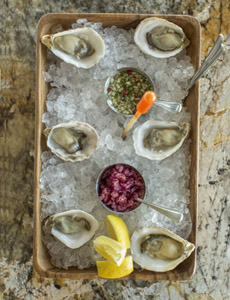
|
|
|
|
||
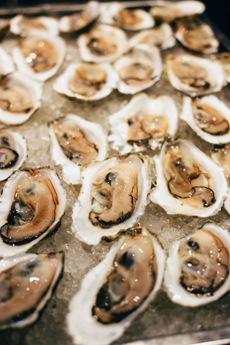
|
HOW TO USE THE OYSTER FLAVOR WHEEL
1. Start with the taste section. Be sure to note the oyster’s saltiness by using a brine scale of 0 to 5—0 being no salt, 5 being full ocean salinity. 2. Follow the wheel clockwise to note the oyster’s texture and finish. The finish is the taste that remains in your mouth after you’ve eaten the item. An oyster may have multiple attributes in each section, so taste for all the nuances. . If you encounter an unpleasant oyster, faults are built into the wheel. The wheel does not explicitly call out faults because it is subjective (an analogy: certain wine grapes have a quality described as “skunky” and some aromas are heavily sulphuric. Some people dislike them, others don’t care. Each taster should evaluate a product based on his/her own preferences. To ensure a complete flavor experience: |
|
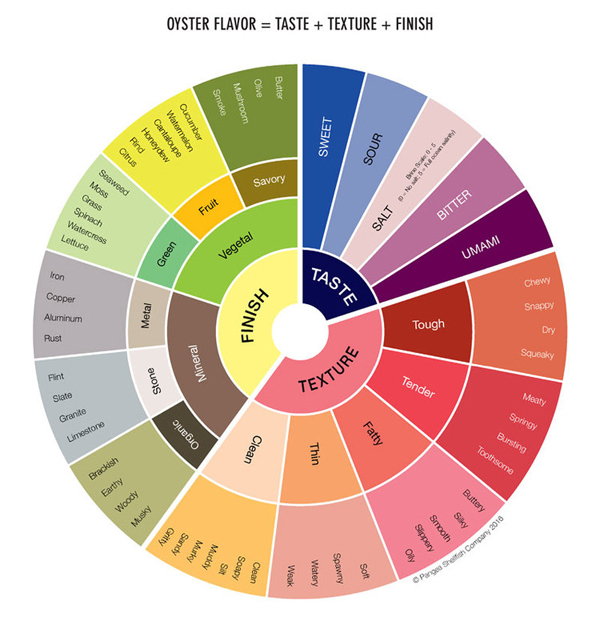
This chart is © Pangea Shellfish Company, and is the first version of the wheel. It will continue to evolve based on input from industry professionals, so check for the latest version.HAVE AN OYSTER TASTING PARTY Don’t want to shop and shuck at home? Bring the wheel with you to a top seafood restaurant and let the professionals do the work. |
||
